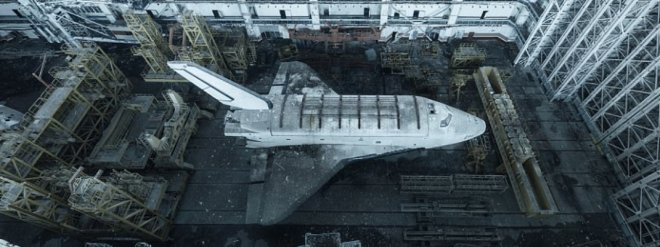
Two Soviet-era spacecraft reportedly the part of Moscow's Buran programme have been found in a desert hangar in Kazakhstan. The rusty remnants were discovered inside a derelict Soviet warehouse in the Kazakhstan desert hangar, 125 miles east of the Aral Sea. The rusty spacecraft remnants indicate the vast space ambitions of the communist regime, which was competing with America in the world of space expeditions during the Cold War period.
Photographs of the erstwhile USSR warehouse also feature a gigantic Energia rocket designed to propel Buran, the unmanned space plane into space. As USSR met a colossal fall in 1991, the authorities dispersed the Buran programme in 1993, and from then, the warehouse remained an isolated building with no traces of human interference. This abandoned hangar is located very near to Baikonur Cosmodrome, a site which is still used to launch Soyuz rockets.
Even though made of light metals, the Energia rocket approximately weighs a mammoth 2,400,000-kg. These eerie photographs are taken by David de Rueda, and he has posted these images on his website. The Energia rocket is capable of carrying more than 100 tonnes into the orbit.
The Energia rocket: A past competitor to NASA's Saturn V
According to experts, space scientists of the Soviet Union or USSR designed the Energia rocket to compete with NASA's Saturn V, the launch vehicle which played a crucial role in the success of Appollo's lunar mission. Soviets too had designed the launch vehicles in the Buran program in a style which is very similar to that of NASA's space shuttles.
Especially, the external appearance of the Buran program vehicles as seen in the picture is very much similar to US Space shuttle Columbia, indicating that the cold war competition had a direct impact on the development of this space initiative.
Just as the space shuttles used by NASA during the 1980s and 90s, the vehicles found in the Buran program had engines located at the back, and there were two wings to initiate controlled landing back on earth. The vehicles in the Buran program also shared strikingly similar shape and style of the US space shuttles, including the colors outside.
The finding also supports the popular belief during the Cold War period that the USSR had stolen some unclassified files from the US database, and the similarity of design, color, and style of the propulsion system substantiates that belief.
Experts have often termed the "Soviet Acquisition of Militarily Significant Western Technology" as significant and it has reportedly helped the USSR to save many years which should be actually spent on scientific research and testing time before launching a space vehicle.









